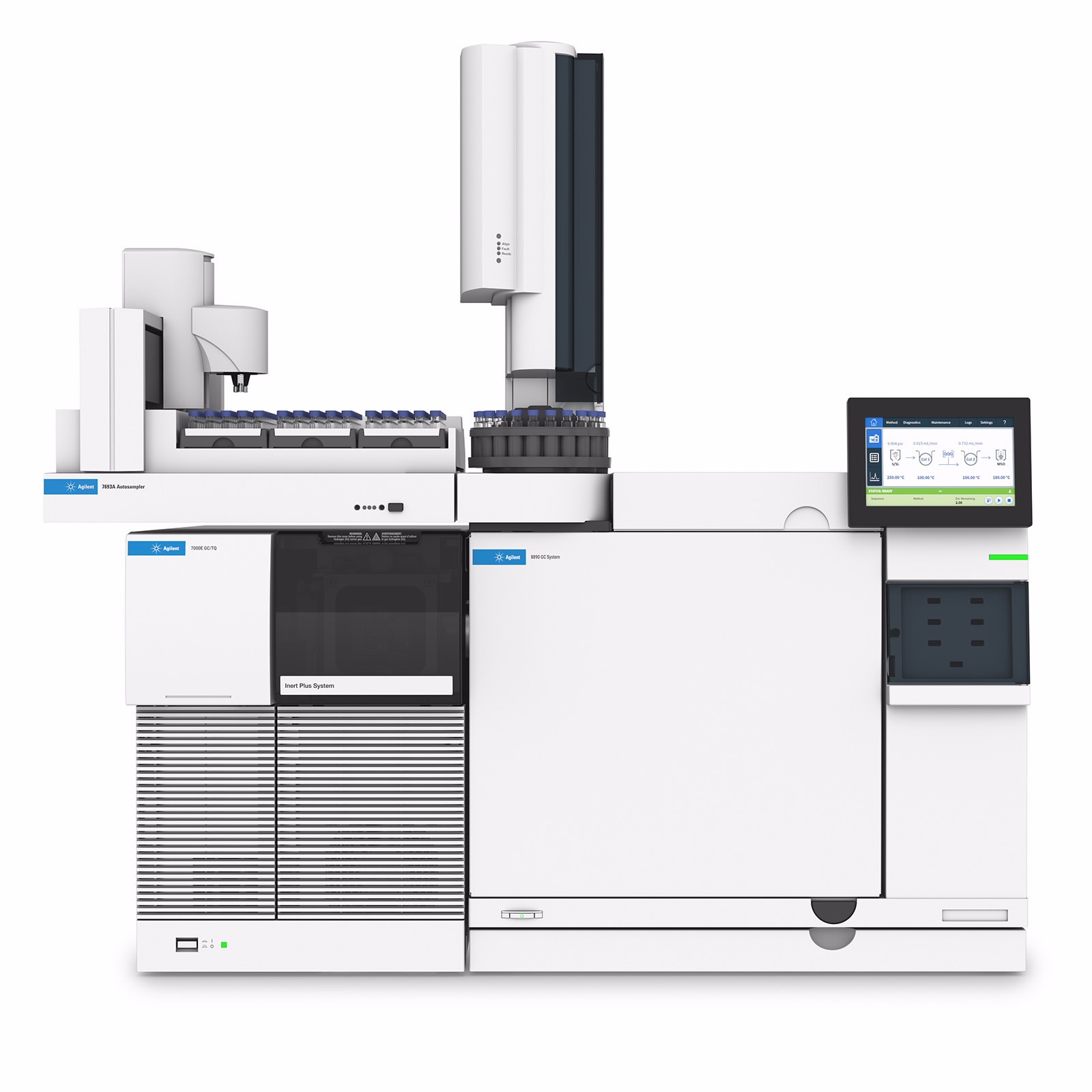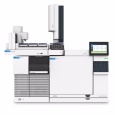方案详情
文
Abstract
This application note describes the key strategies for pesticide analysis with gas chromatography/triple quadrupole mass spectrometry (GC/TQ) using hydrogen
as the carrier gas while maintaining sensitivity to meet maximum residue limits (MRLs). The key aspects addressed in this work include the recommended column
configuration, the optimized injection conditions, and the appropriate choice of the mass spectrometer (MS) electron ionization (EI) source hardware developed
for use with hydrogen carrier gas. The 20 m × 20 m (0.18 mm × 0.18 μm) Agilent HP-5ms UI midcolumn backflush configuration allowed for maintaining the same retention times as with helium, leading to time savings associated with method translation. The resulting chromatographic resolution achieved under the optimal conditions with hydrogen surpassed that with helium. The optimized injection conditions included solvent vent mode, a 2 mm dimpled liner, and the use of analyte protectants. The analyte response with hydrogen was enhanced on average 10-fold when using the optimized conditions compared to using hydrogen carrier gas with the injection conditions, commonly used with helium. Both the Agilent HydroInert and the Agilent High Efficiency Source (HES) resulted in nearly identical spectra bserved with hydrogen and helium, which allowed using the same multiple reaction monitoring (MRM) transitions and collision energies as with helium. The ability to use the same MRMs, collision energies, and retention times greatly simplified the transition from helium to hydrogen.
方案详情

The resulting method allowed for quantitation of over 90% of the 203 target pesticides at or below the default MRL of 10 parts per billion (ppb) in the pigmented spinach matrix with both the HydroInert and the HES sources. The method detection limits (MDLs) for compounds susceptible to reactions with hydrogen, and hence, presenting the biggest challenge to the analysis with hydrogen, were in the sub-ppb range, with the HES enabling higher sensitivity and lower MDLs. The calibration performance was demonstrated over a broad range of concentrations, meeting the SANTE/11312/2021 guidelines. The relative standard error (RSE) for over 94% of 203 targets was below 20%. Even the compounds most prone to reacting with hydrogen, such as tecnazene, could be accurately quantitated over the ranges of 0.5 to 5,000 ppb and 0.1 to 1,000 ppb with the HydroInert and HES sources, respectively. Finally, simultaneous dynamic MRM and full scan data acquisition mode was demonstrated for accurate quantitation and reliable compound identification. The identification was based on spectralmatching with the Agilent 8890/7000E and the Agilent 8890/7010C GC/TQ systems using hydrogen carrier gas.
确定
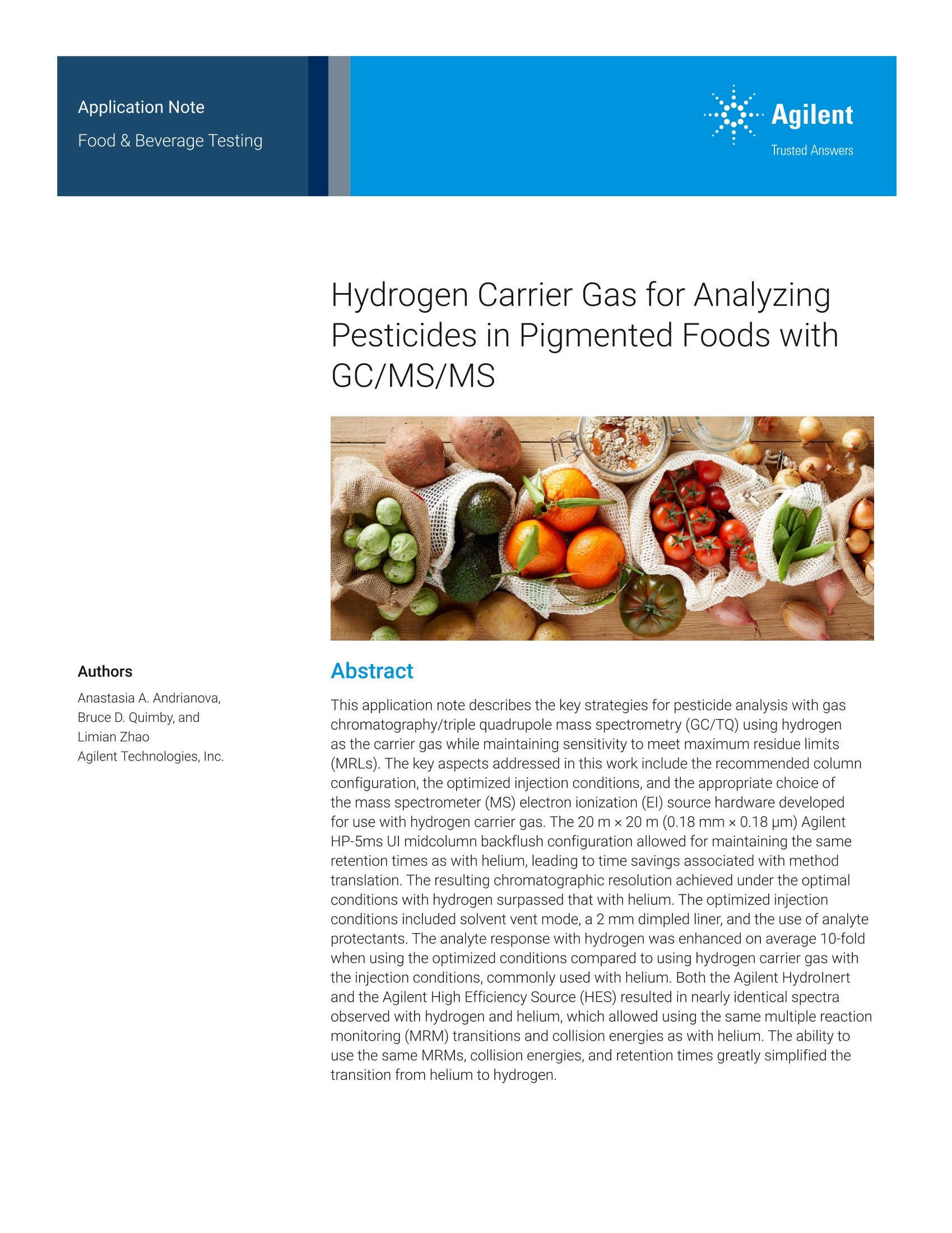
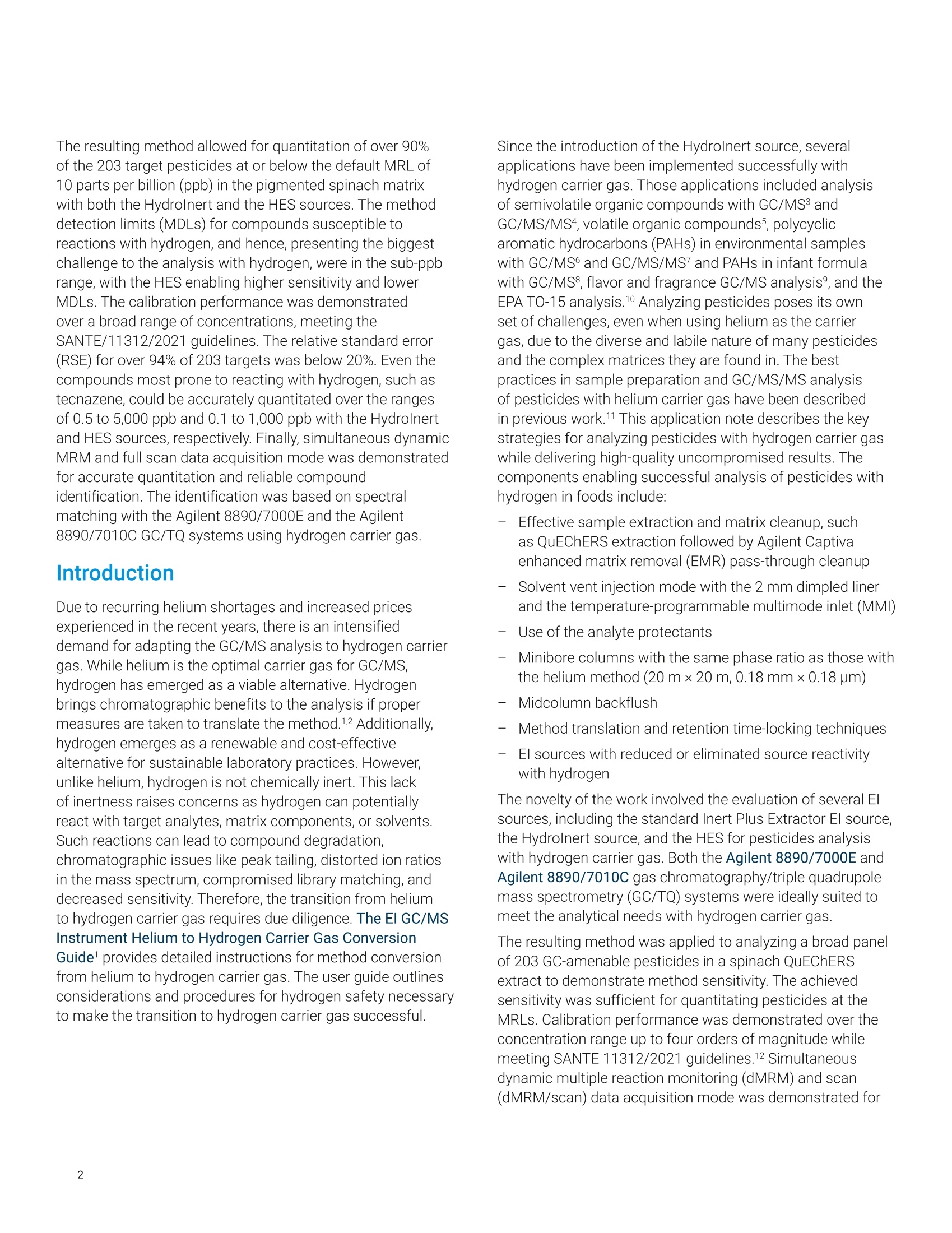

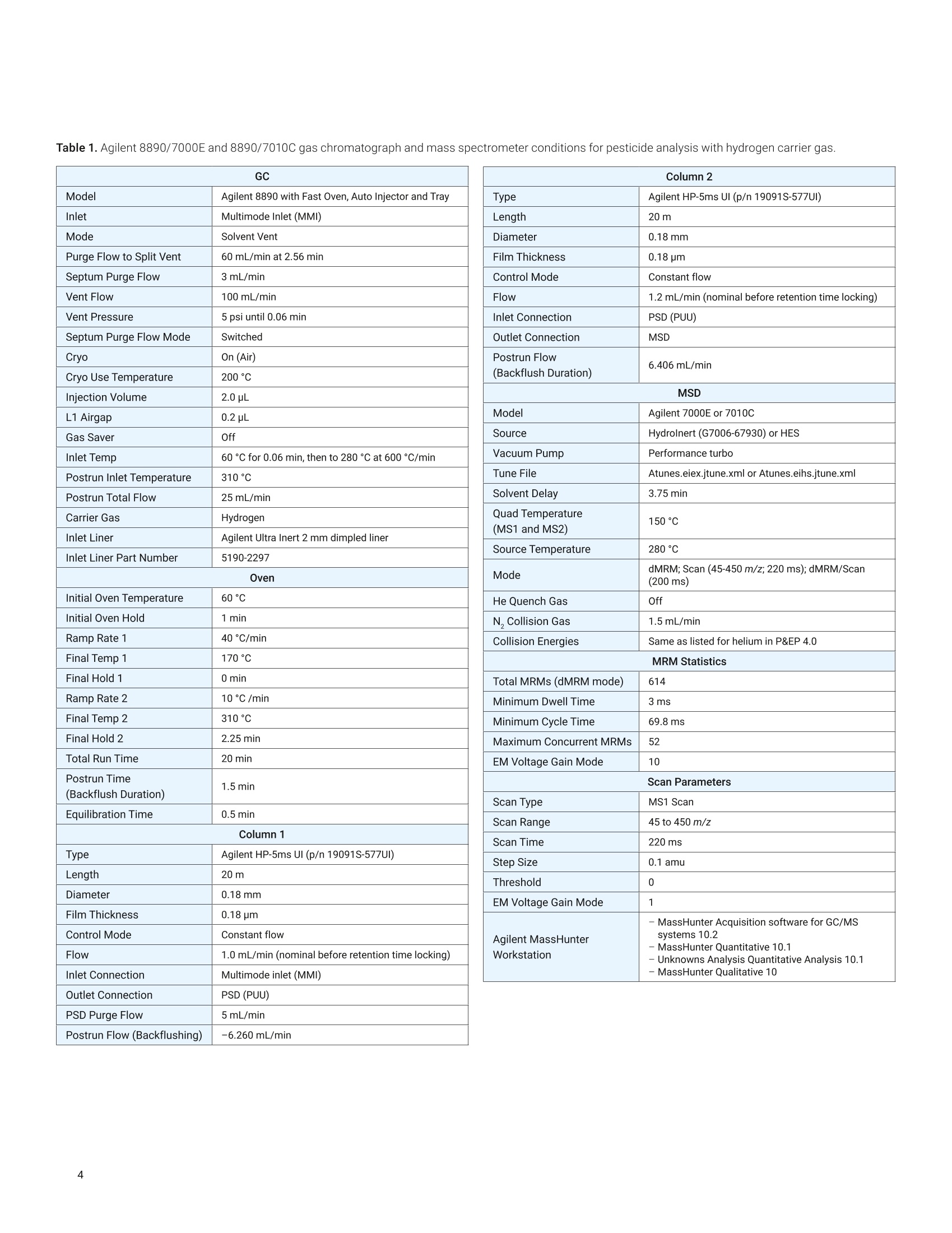



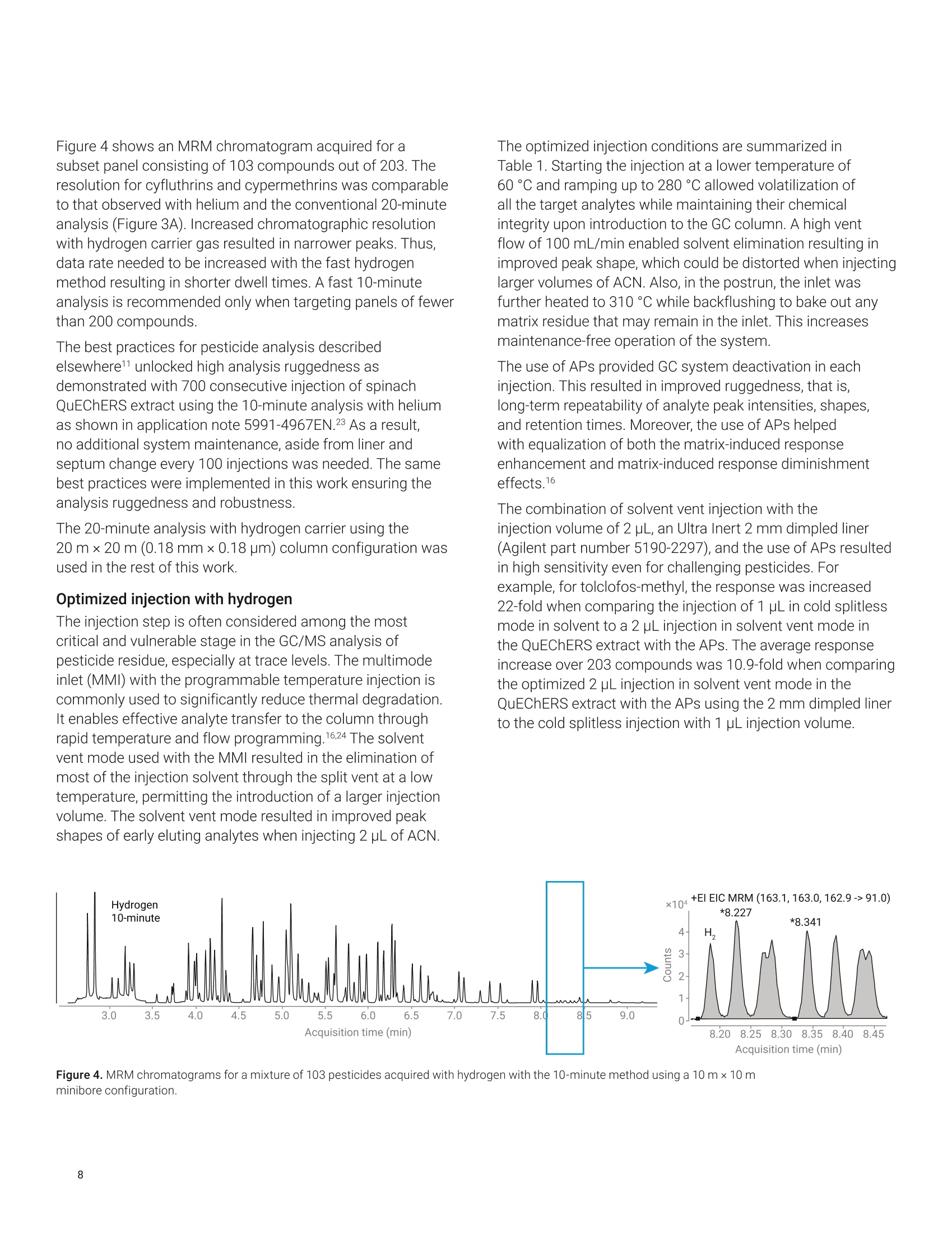
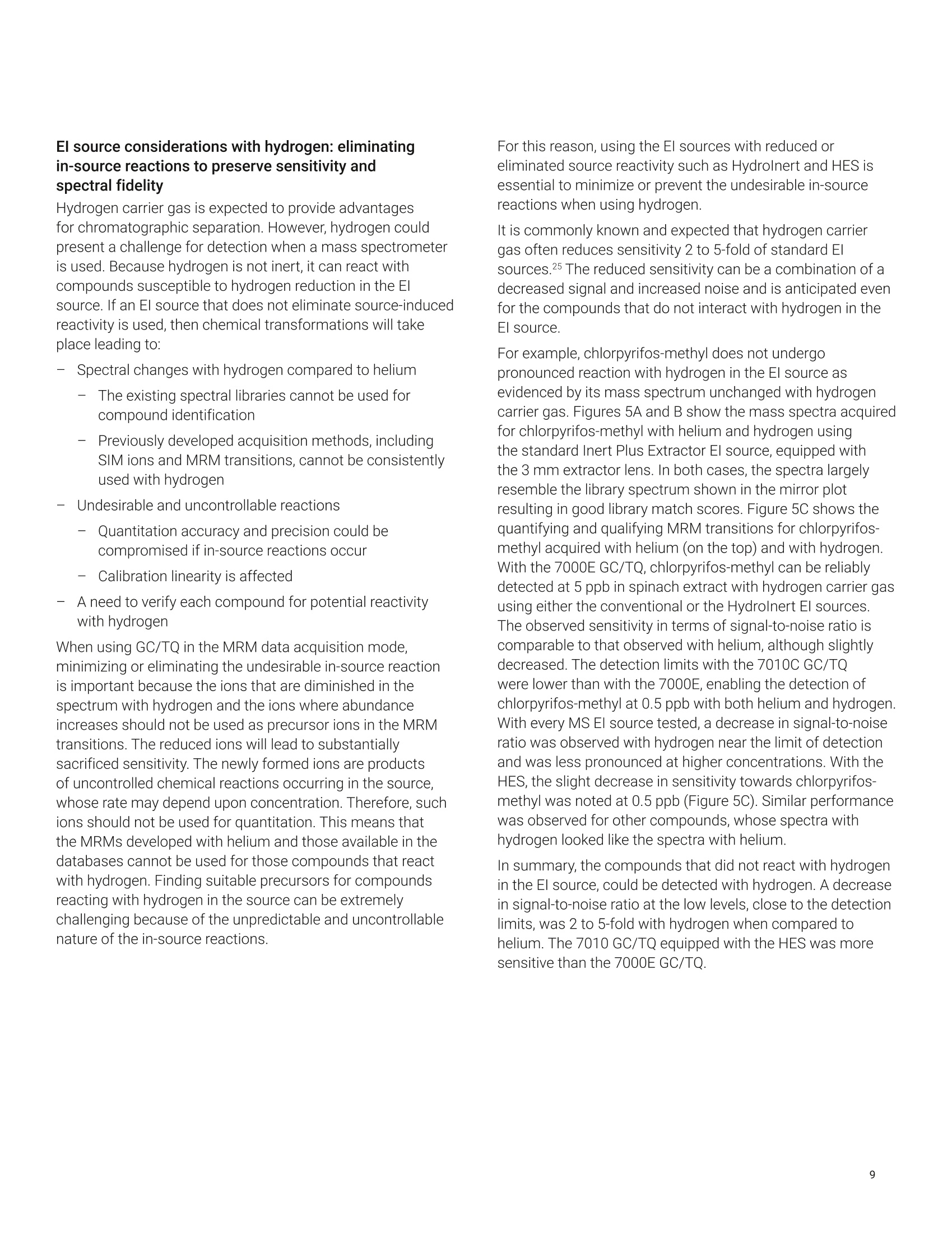
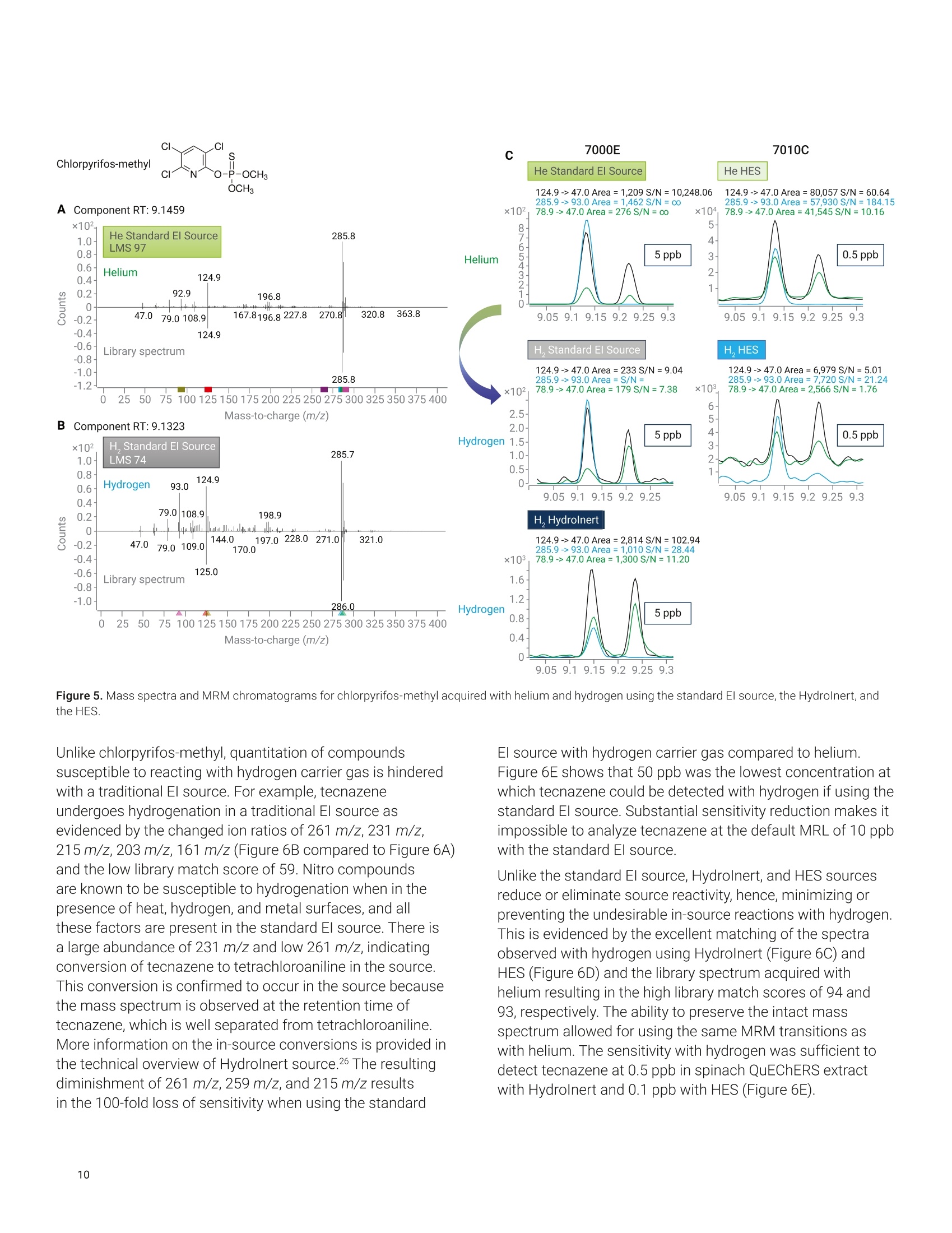
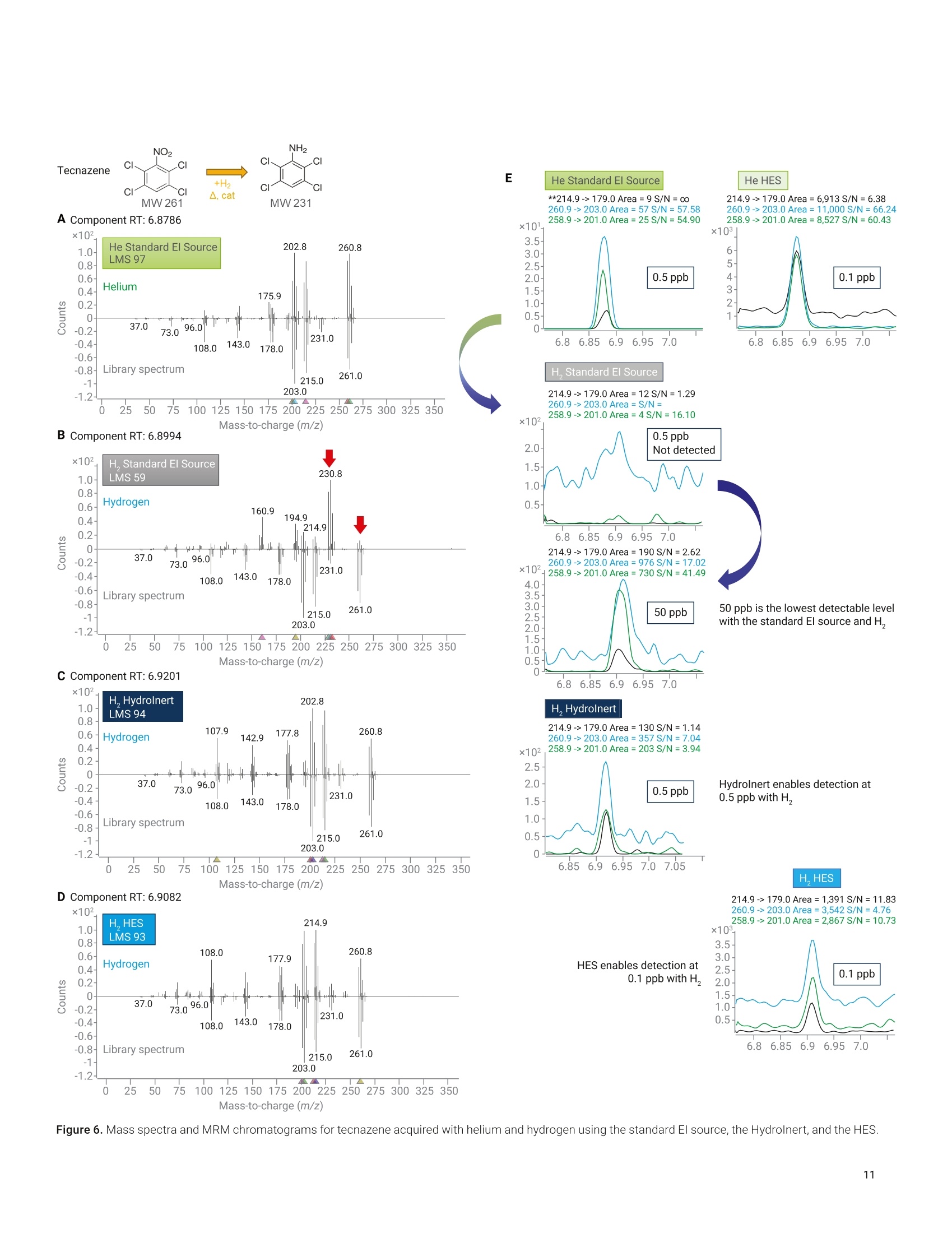

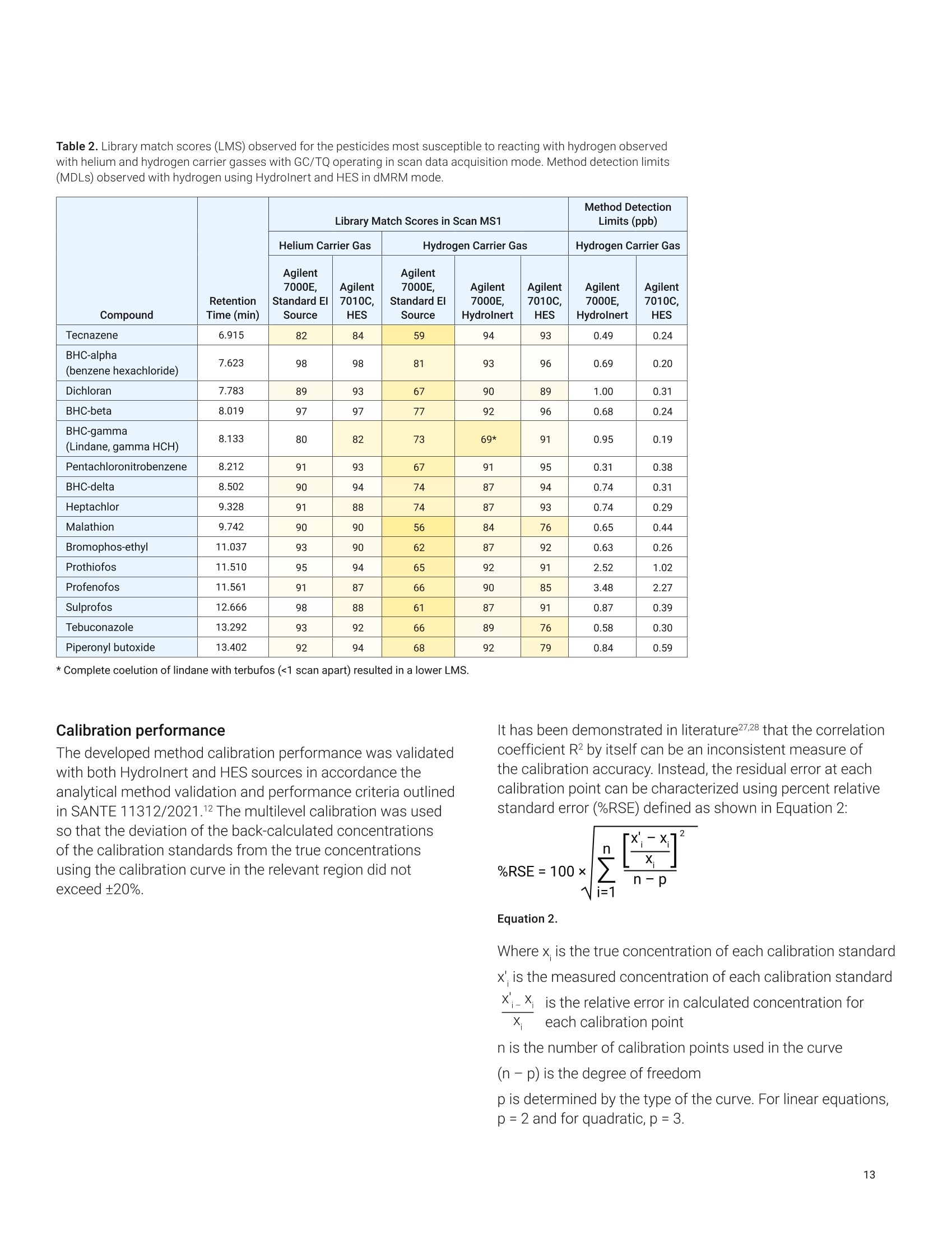
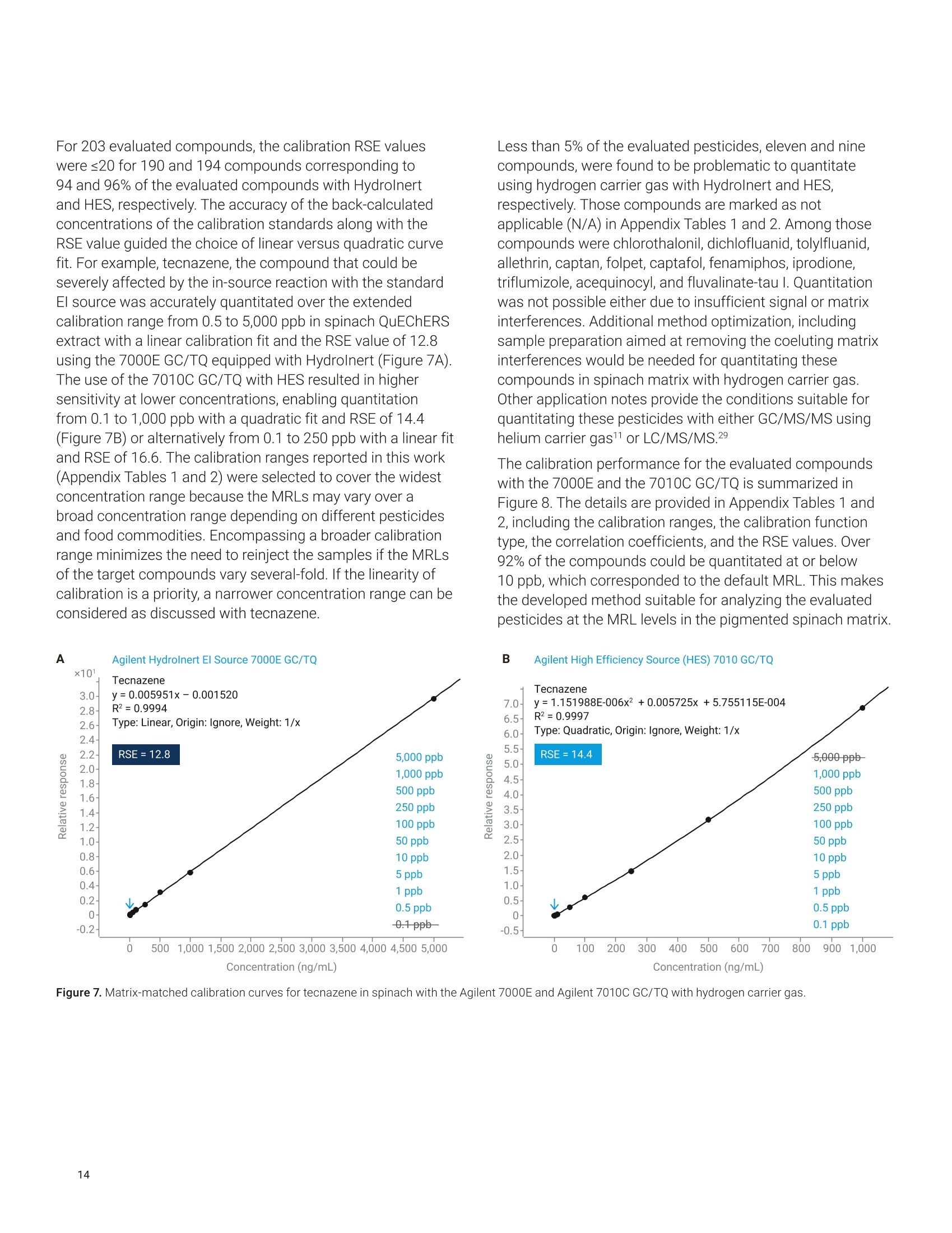
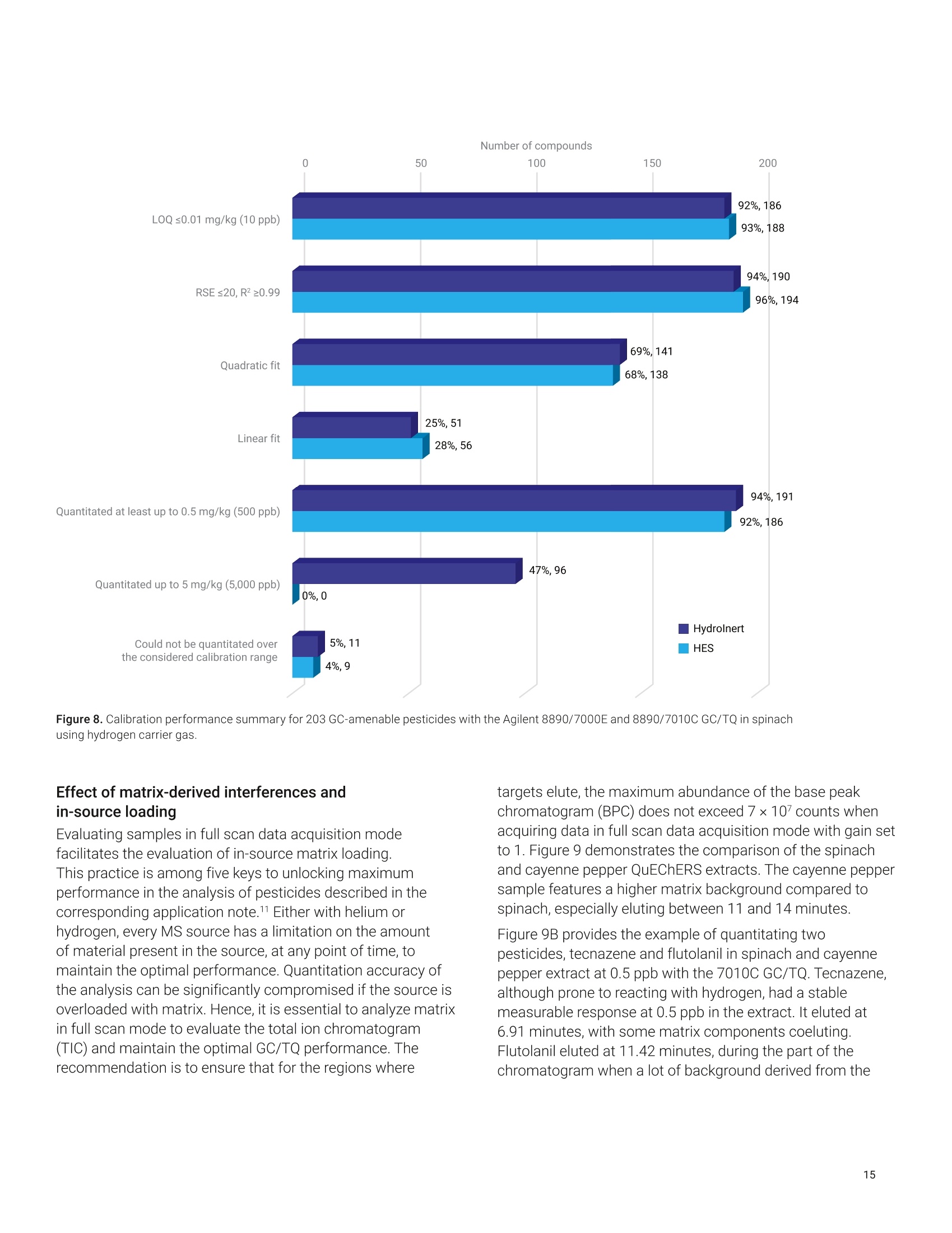

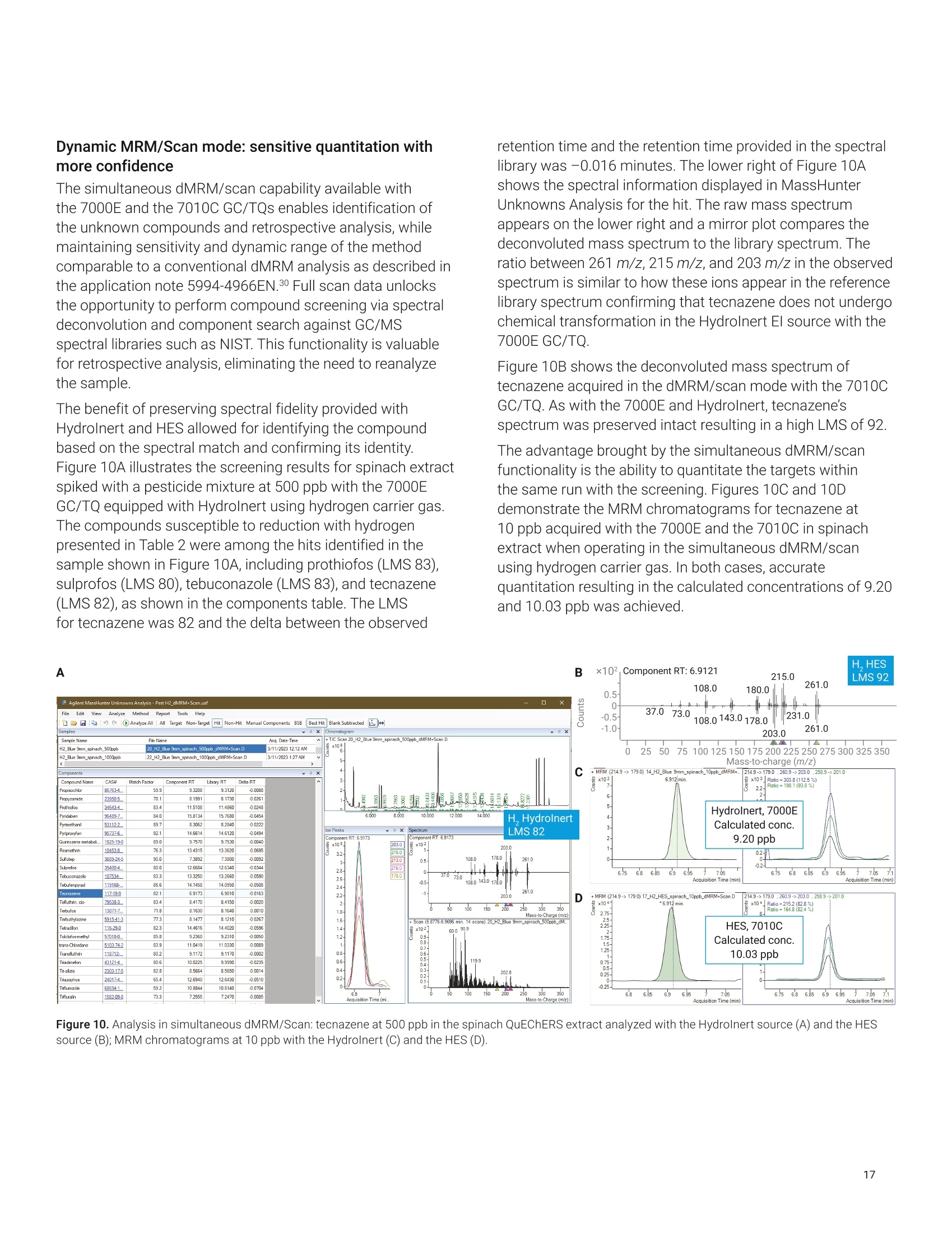

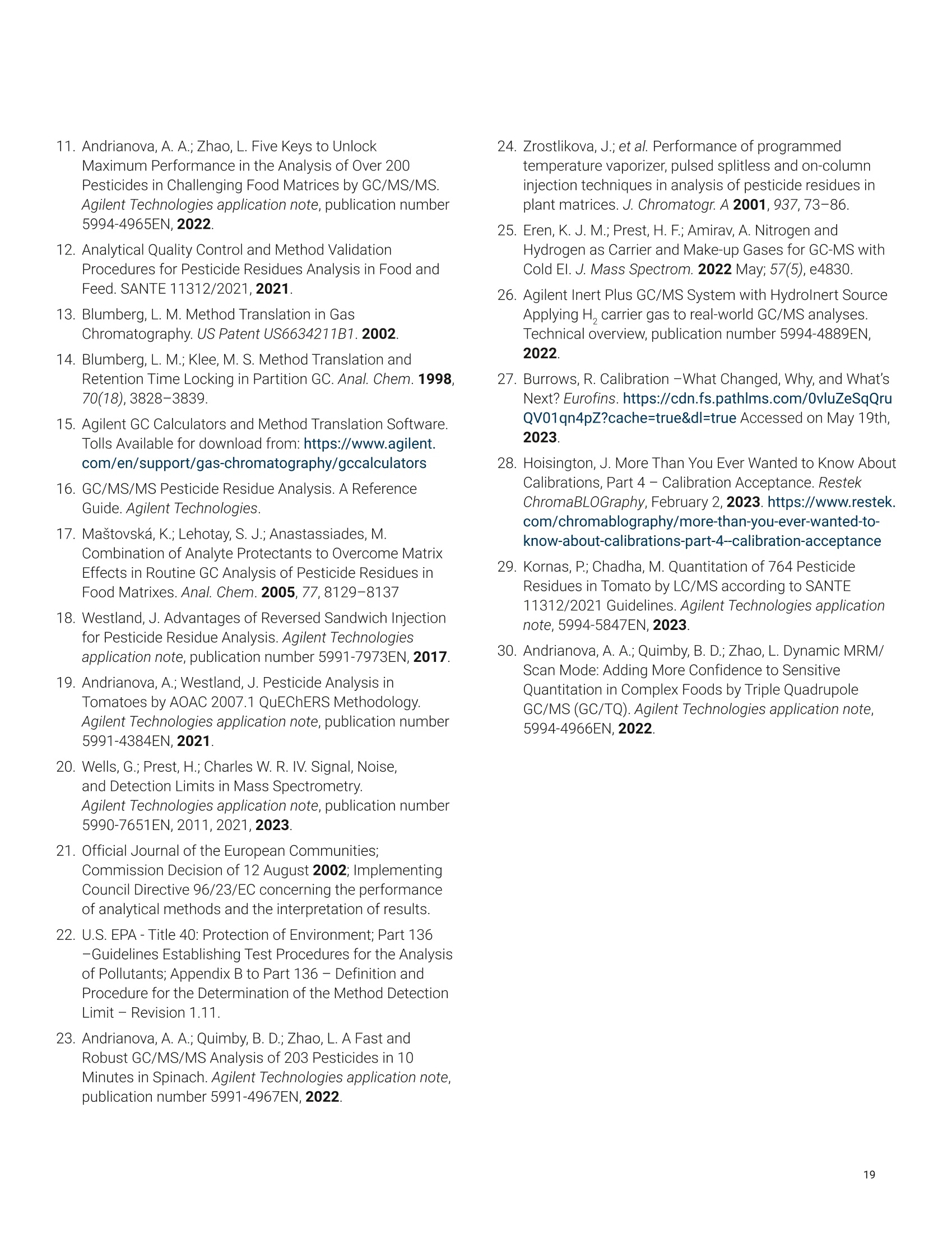

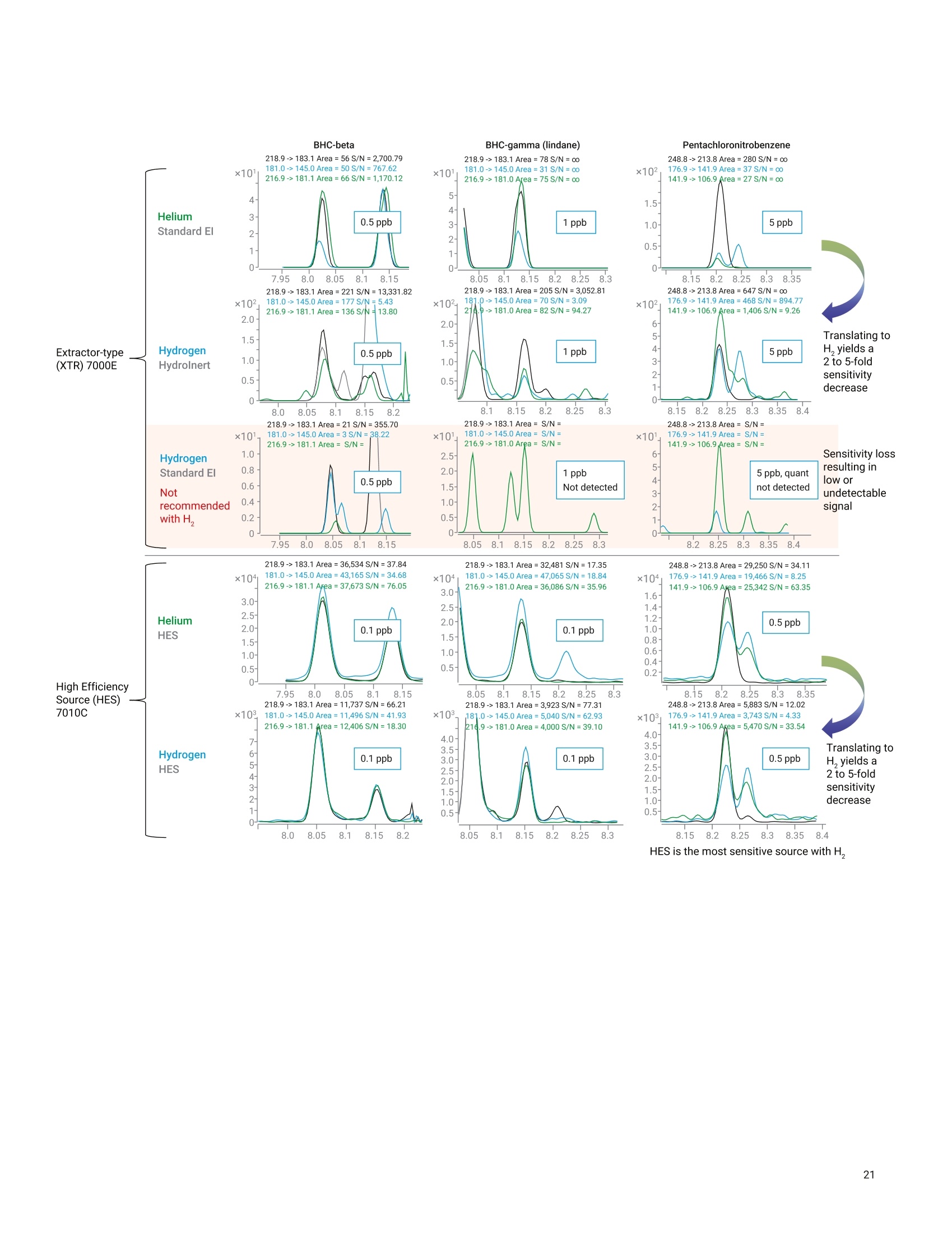
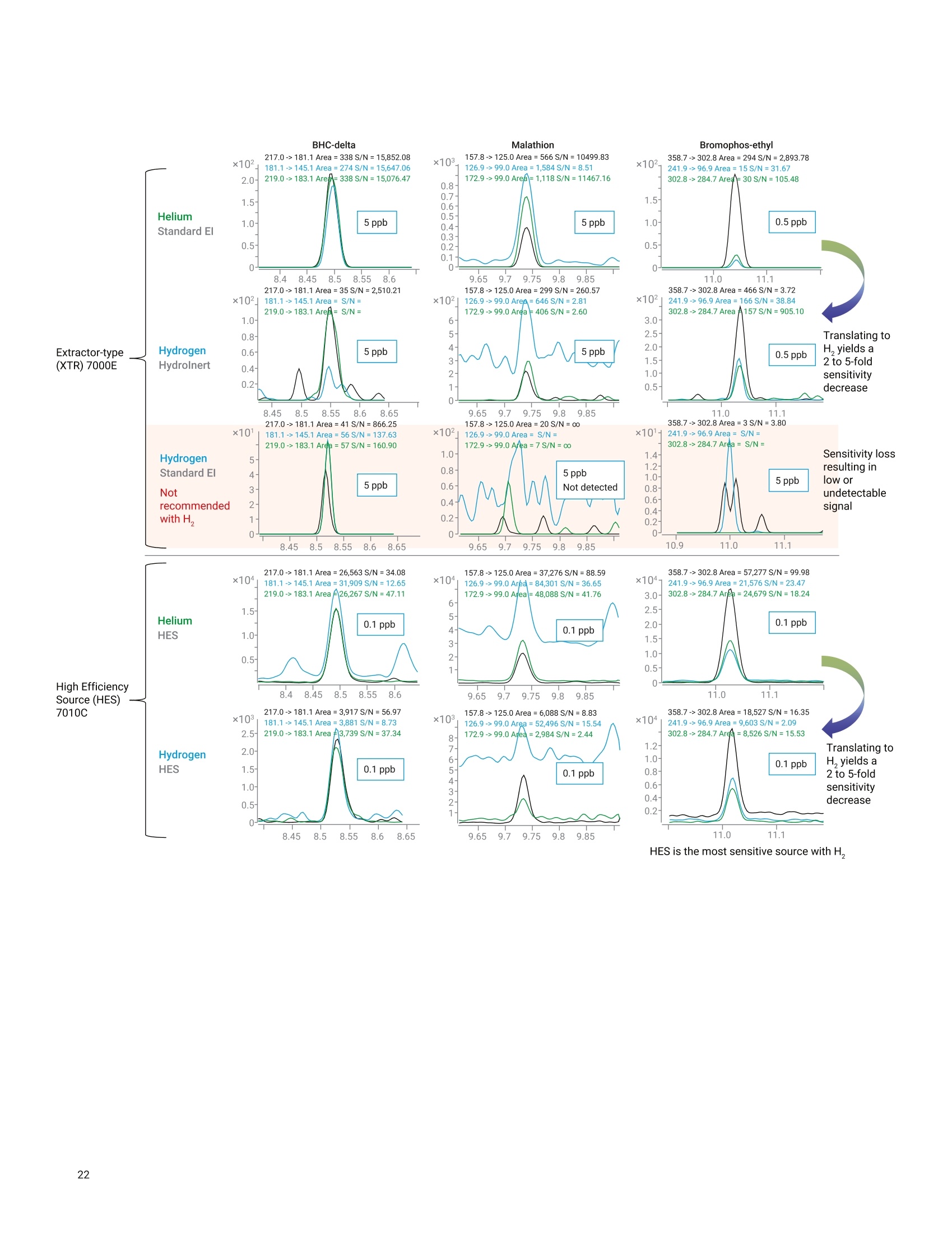
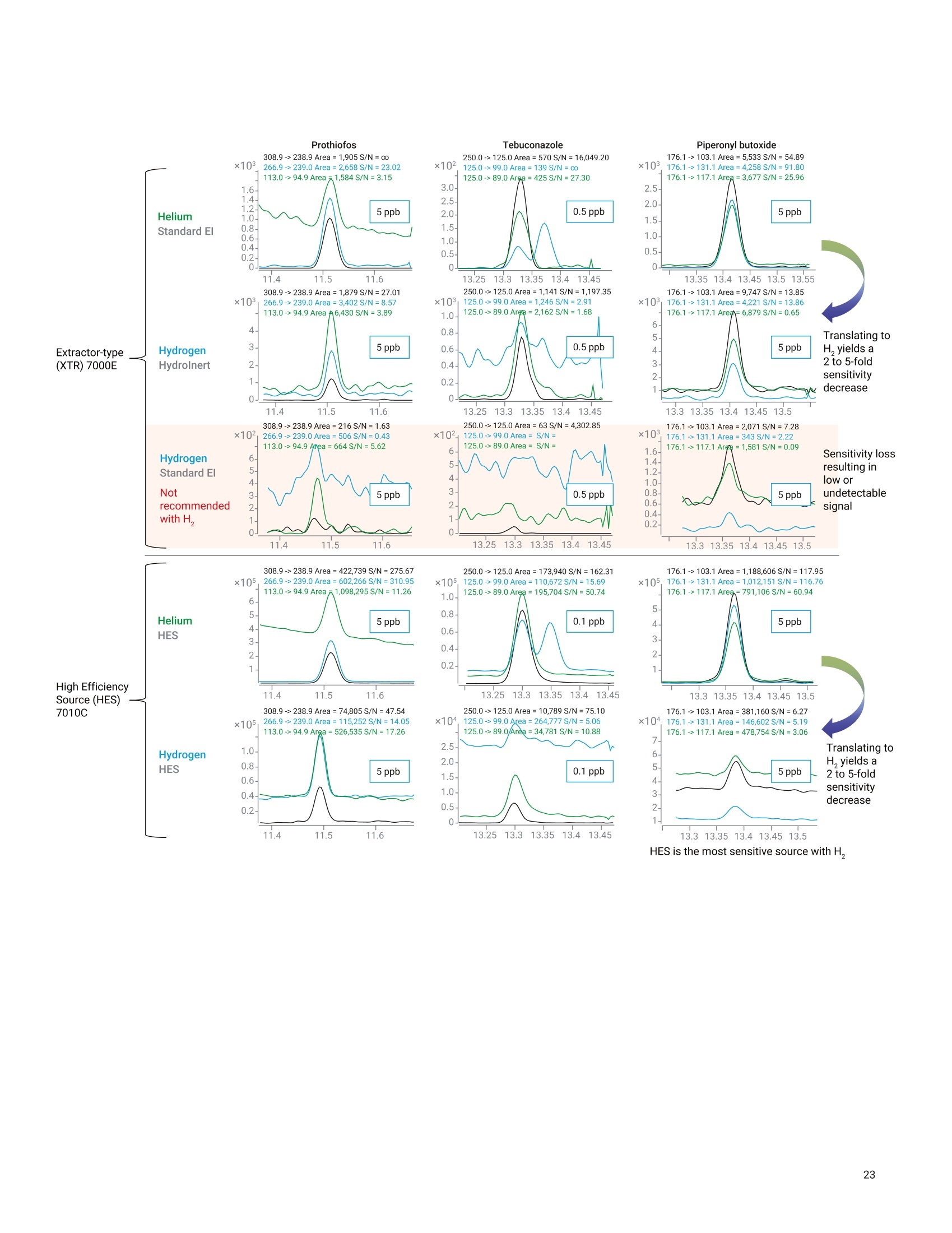
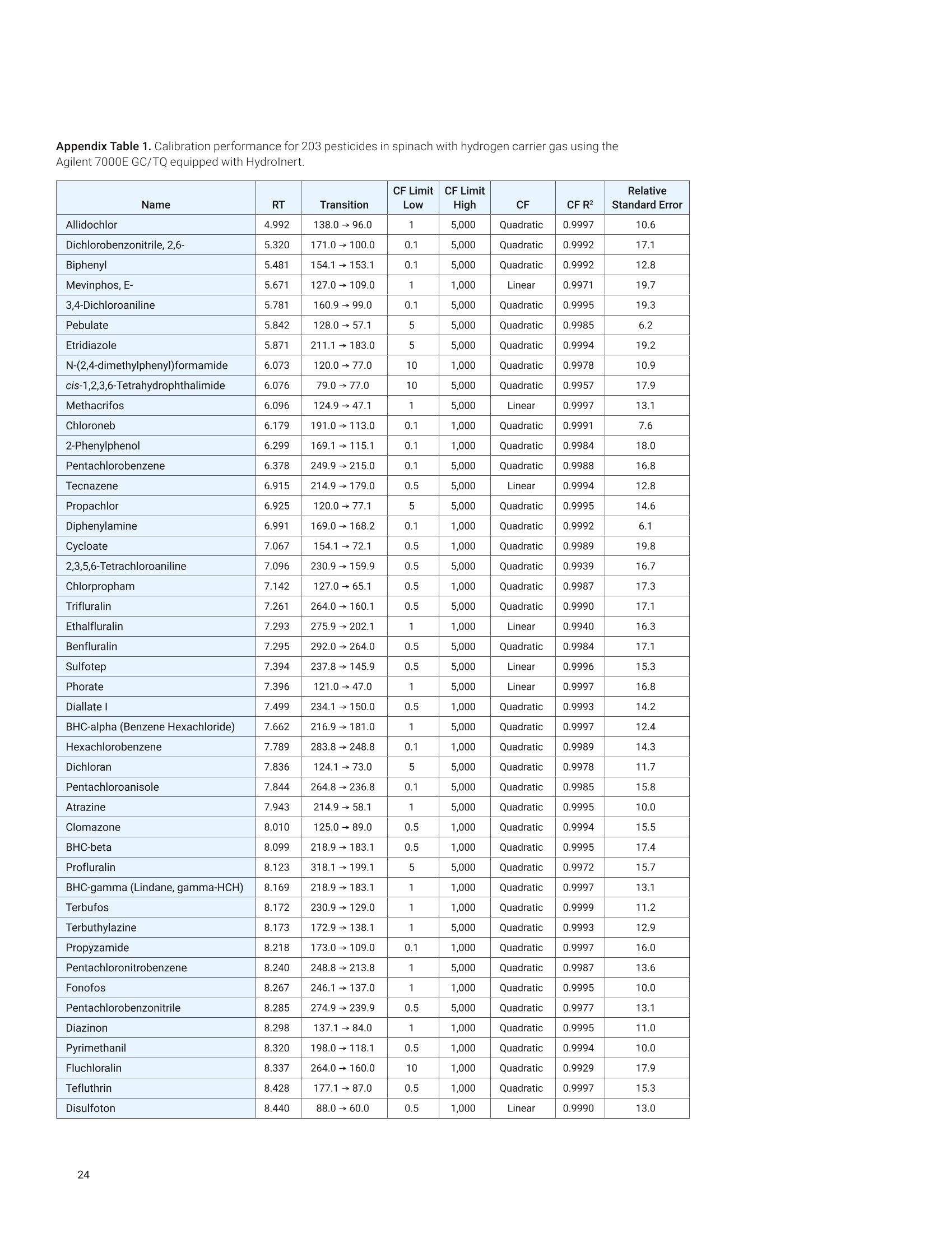
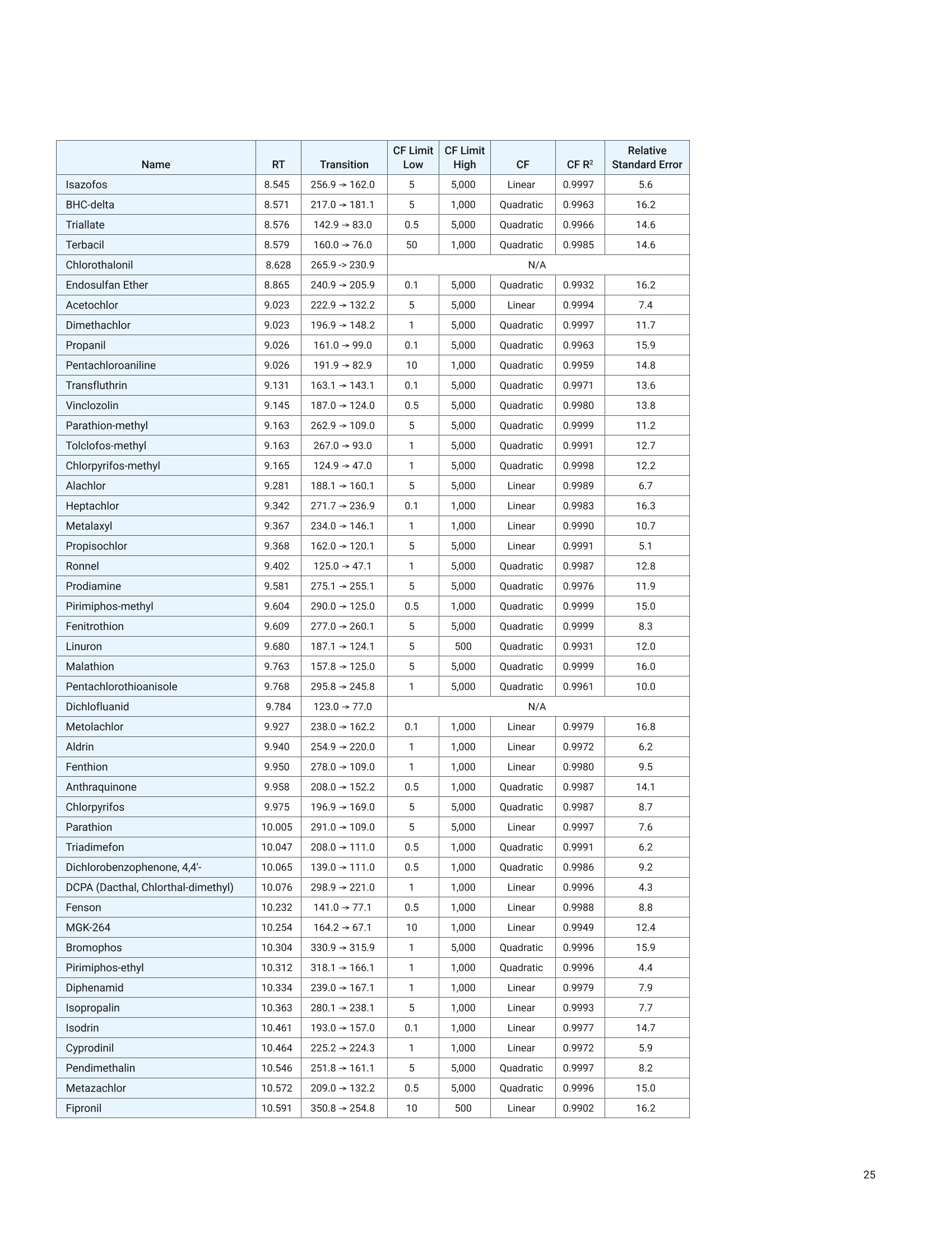
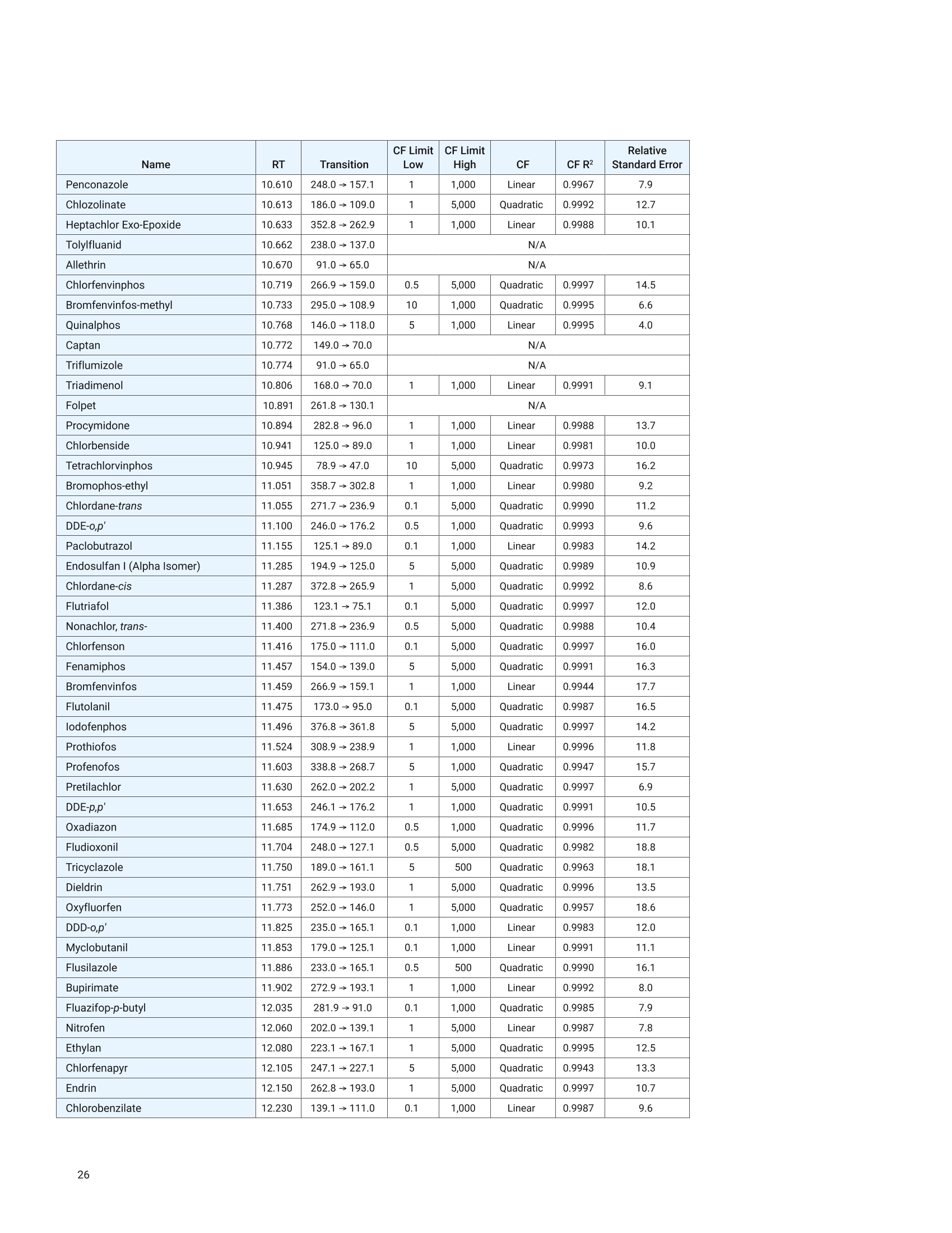
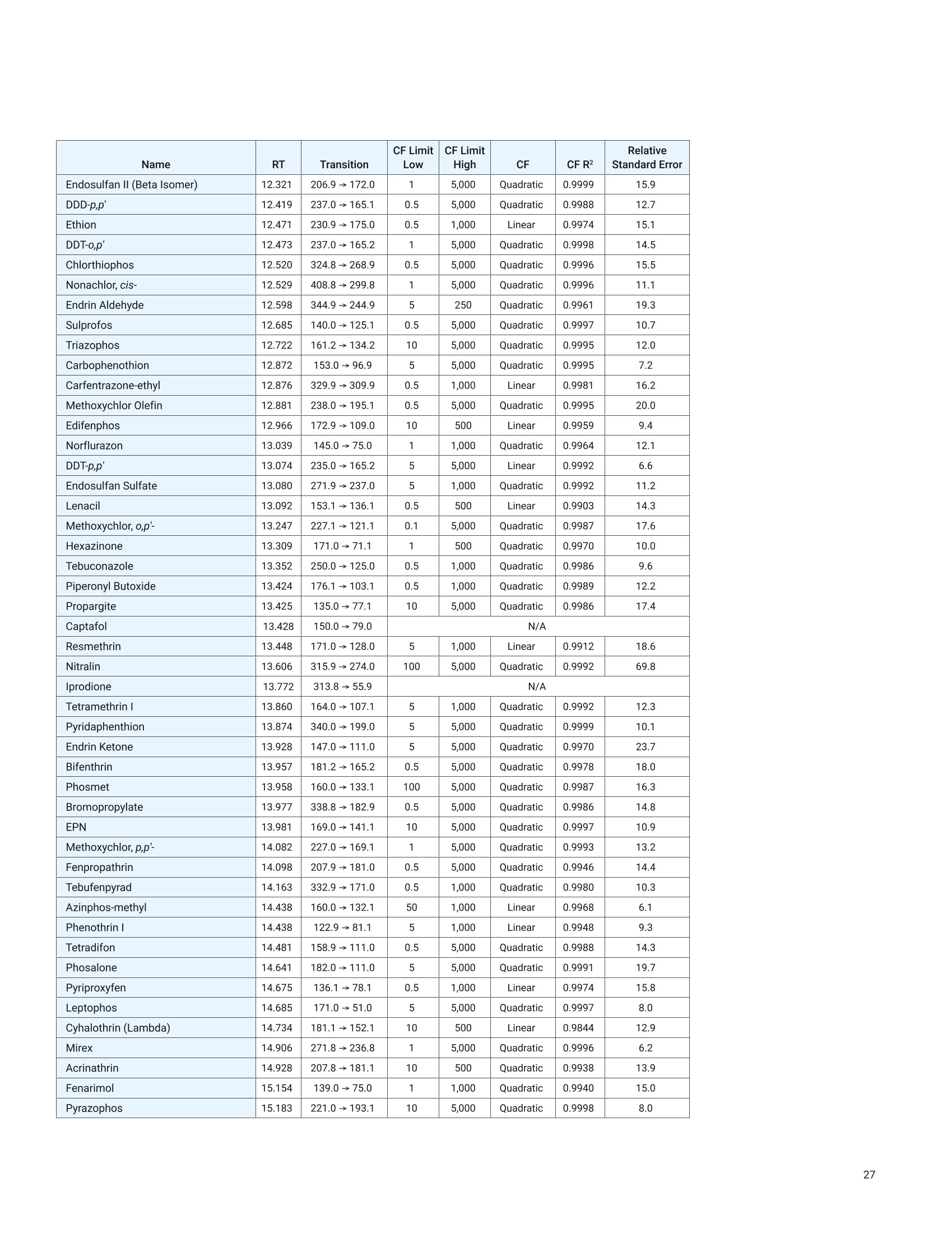

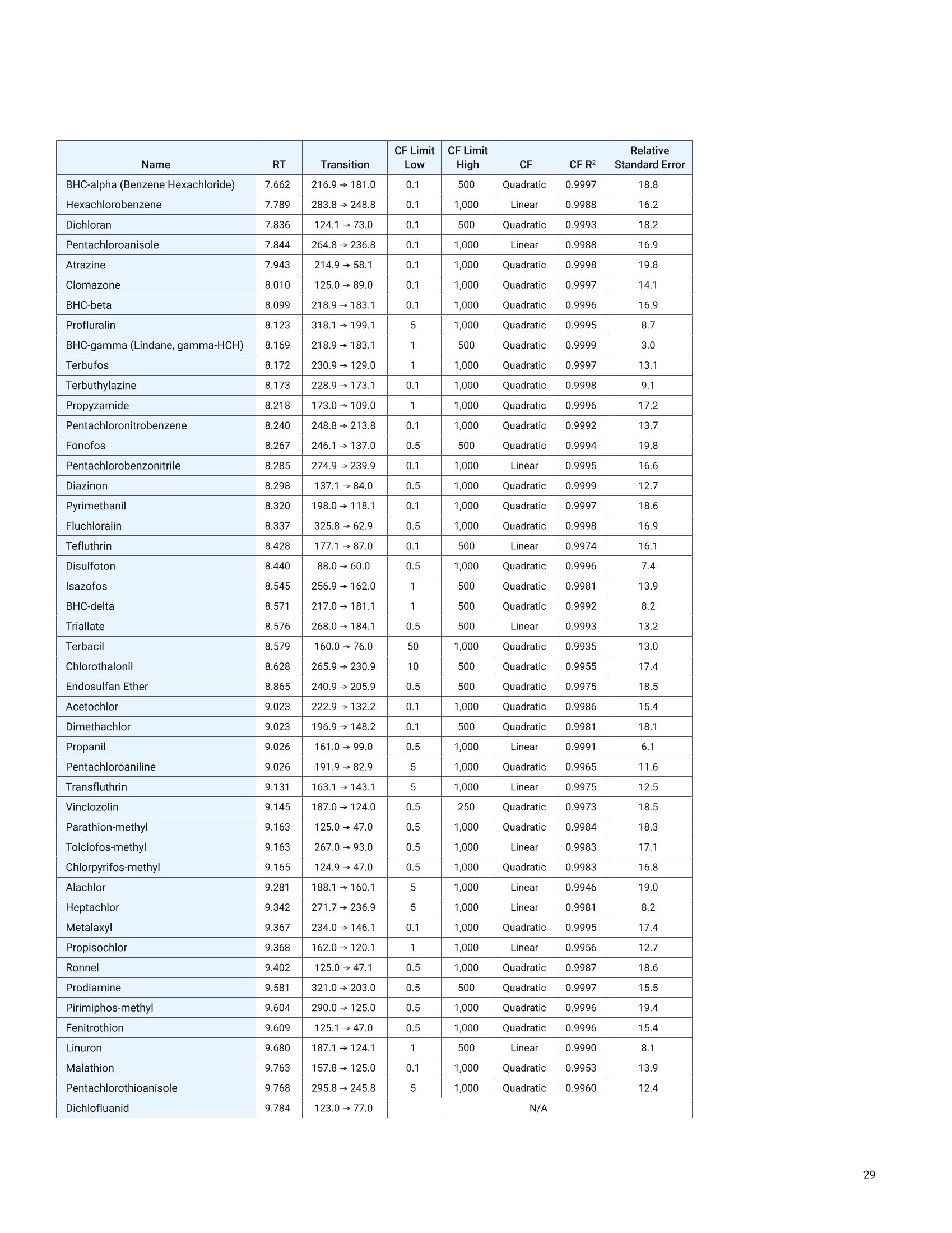
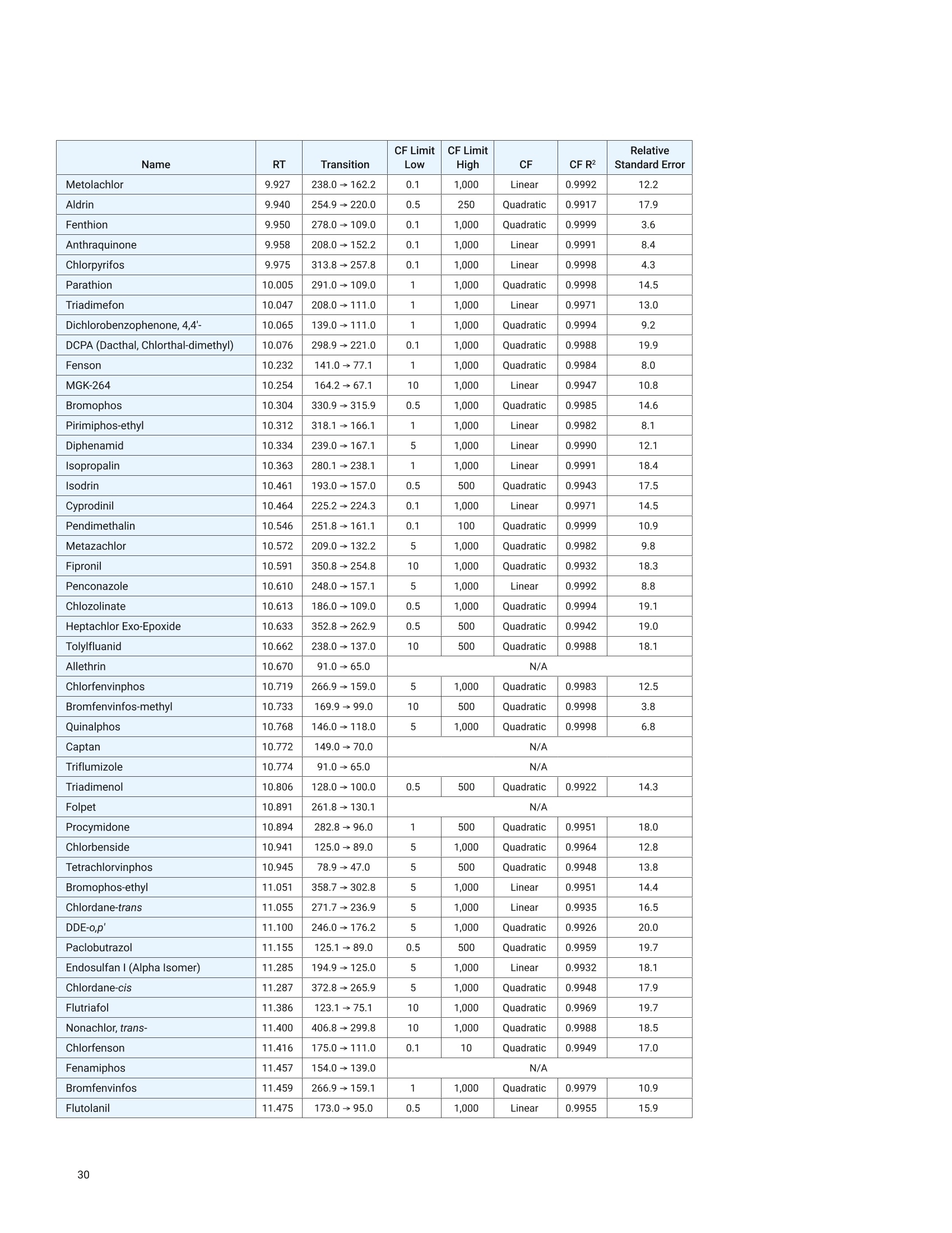
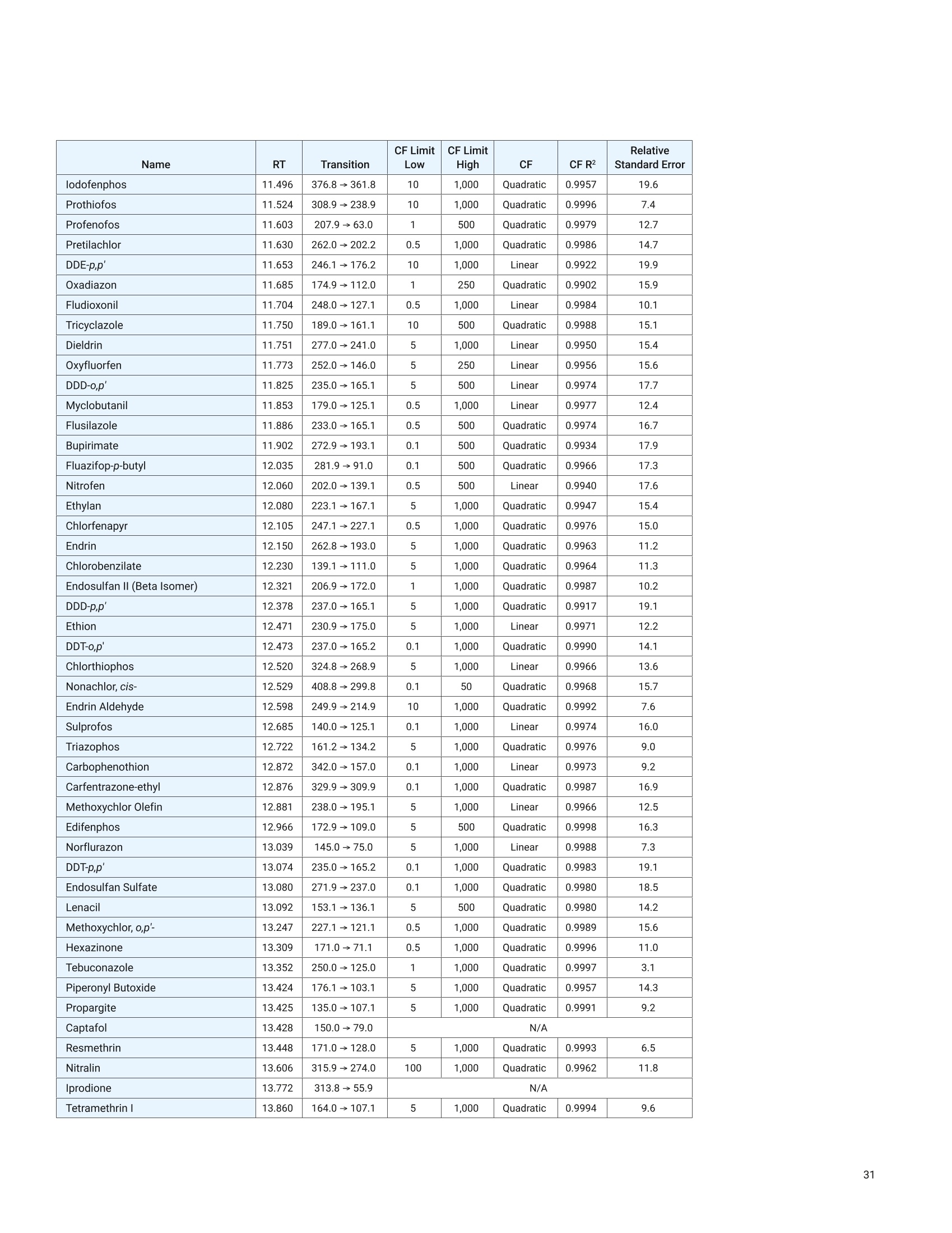
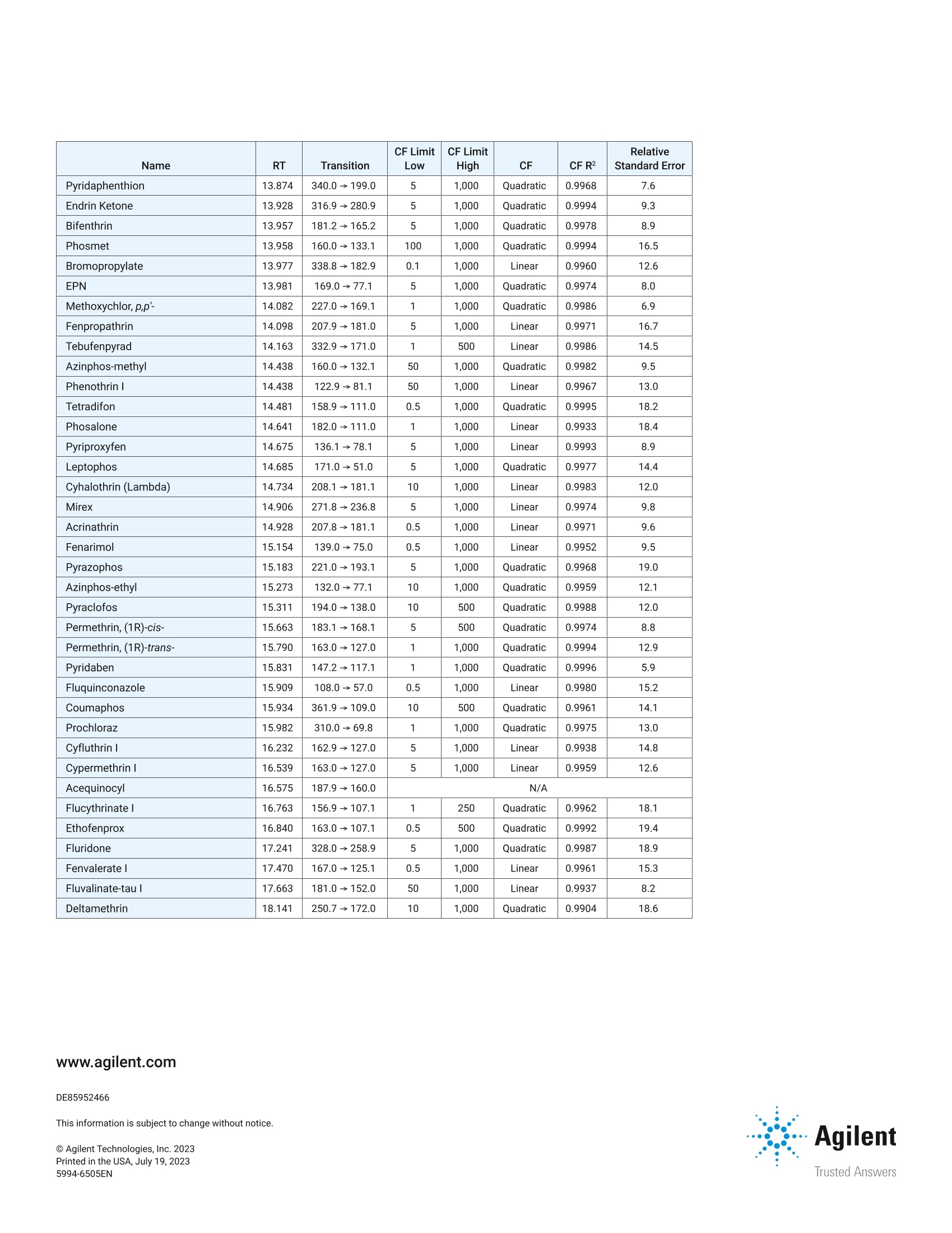
还剩30页未读,是否继续阅读?
安捷伦科技(中国)有限公司为您提供《Hydrogen Carrier Gas for Analyzing Pesticides in Pigmented Foods with GC/MS》,该方案主要用于蜜饯中pigmented Foods检测,参考标准--,《Hydrogen Carrier Gas for Analyzing Pesticides in Pigmented Foods with GC/MS》用到的仪器有Agilent 7000E 三重四极杆气质联用系统
相关方案
更多
该厂商其他方案
更多

